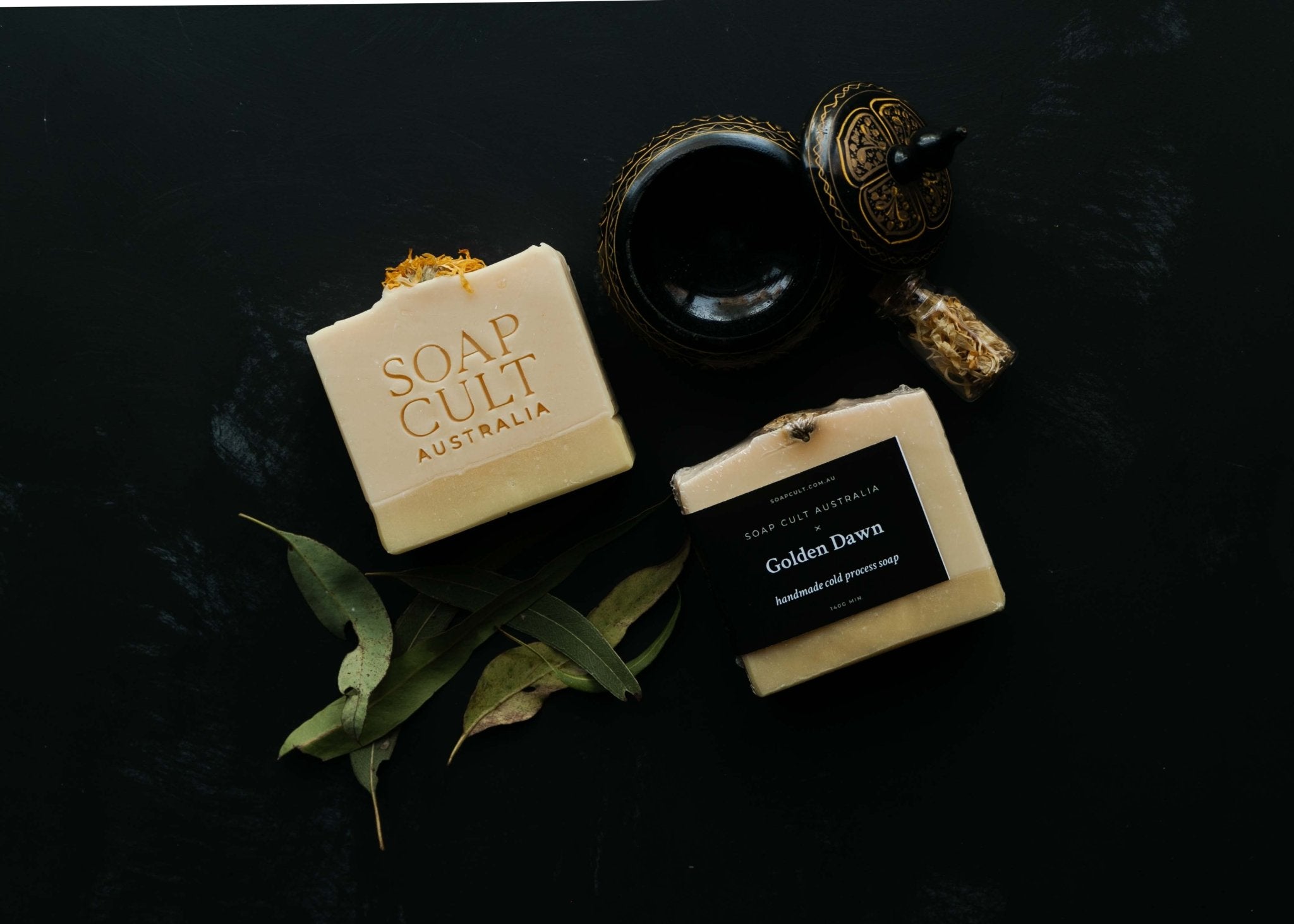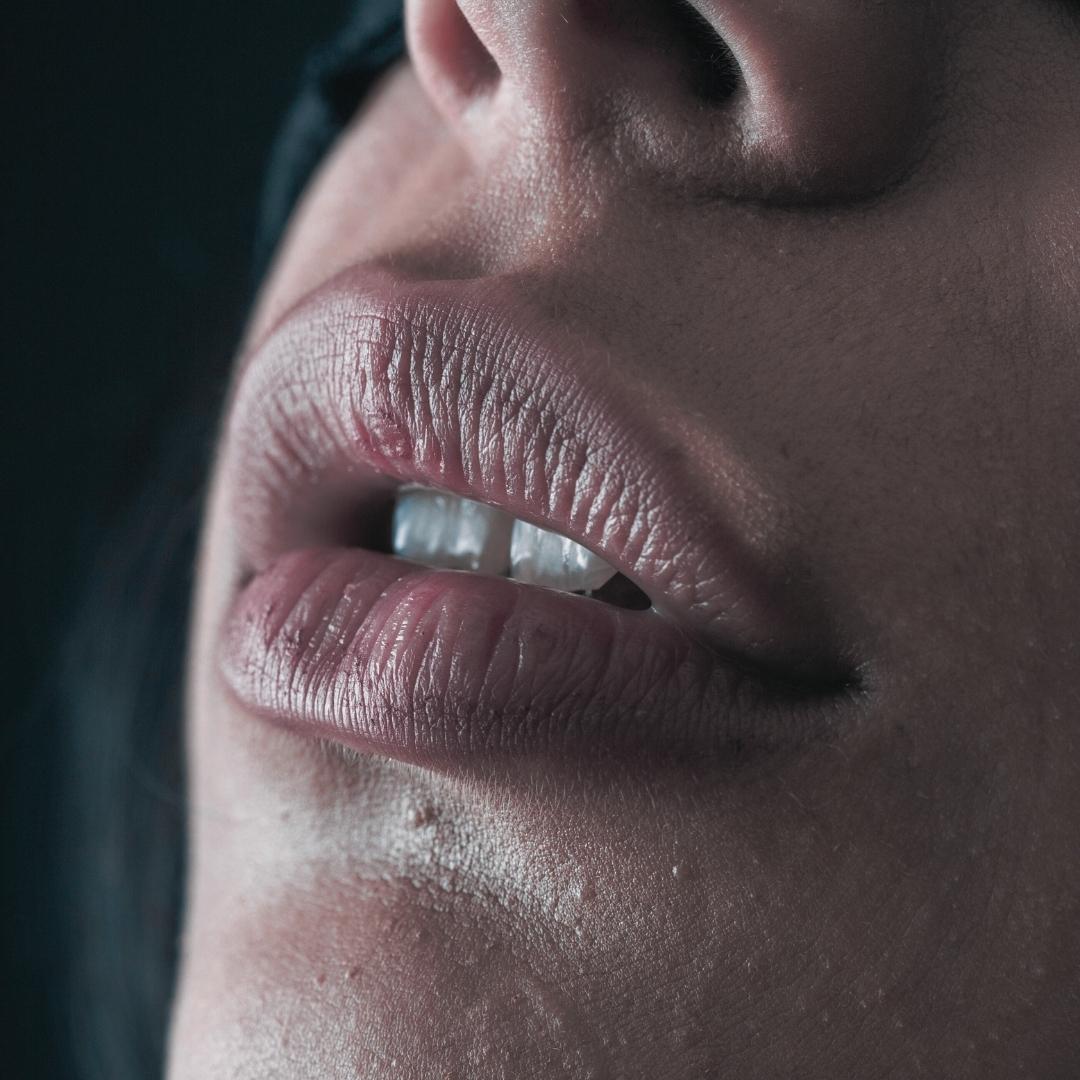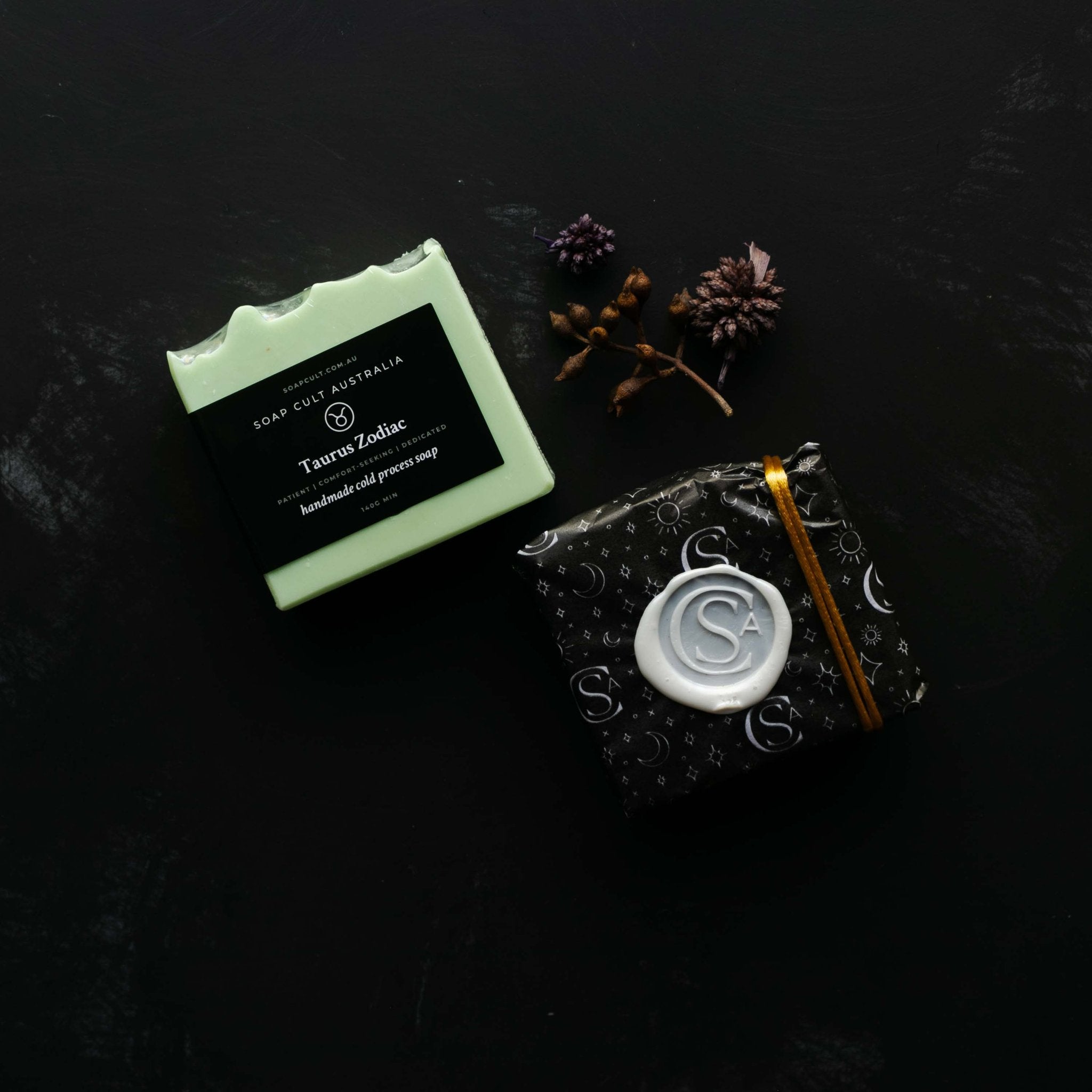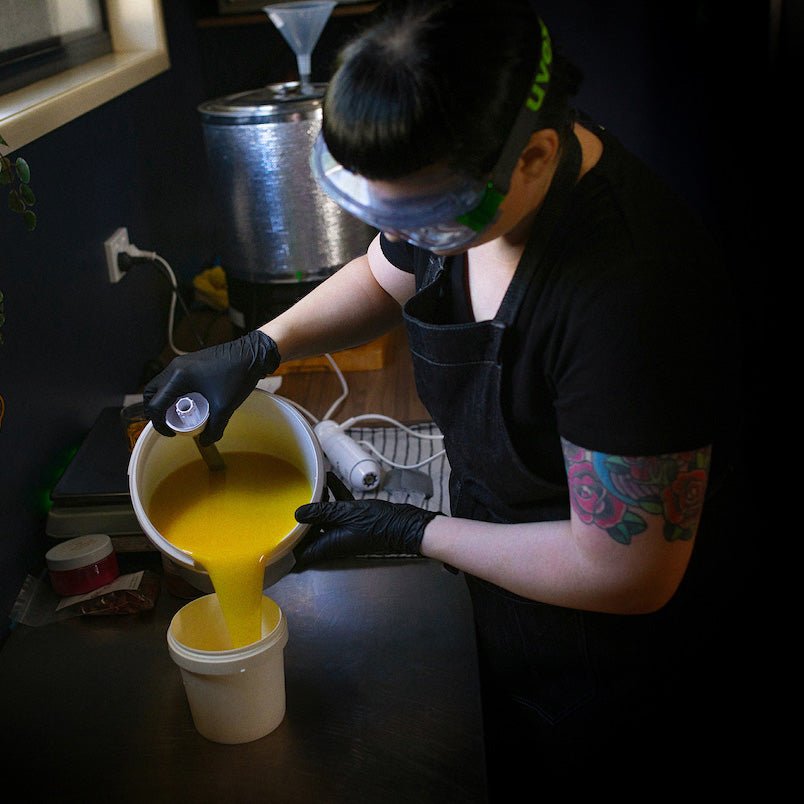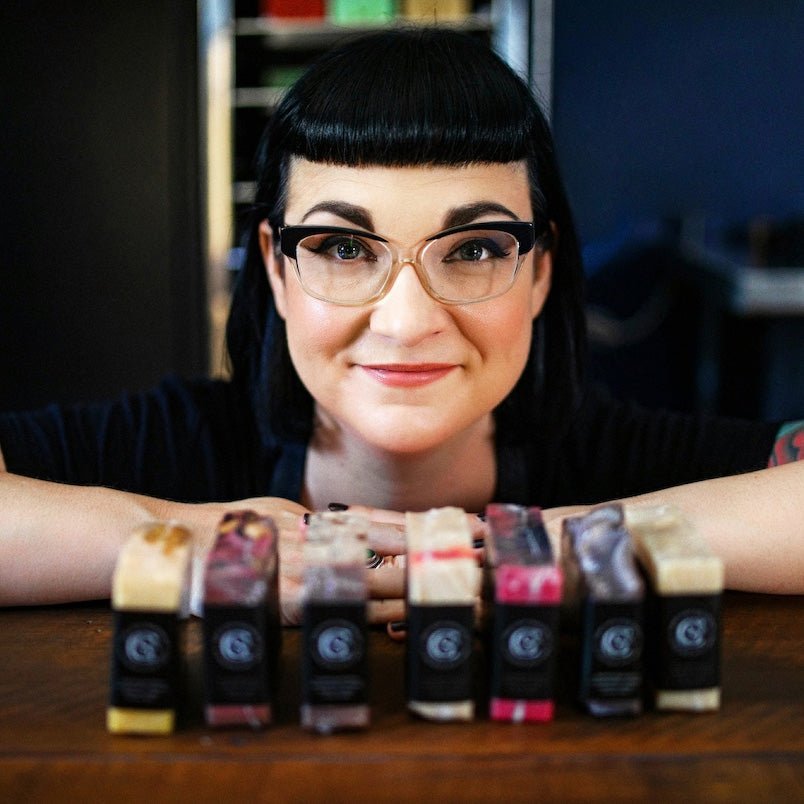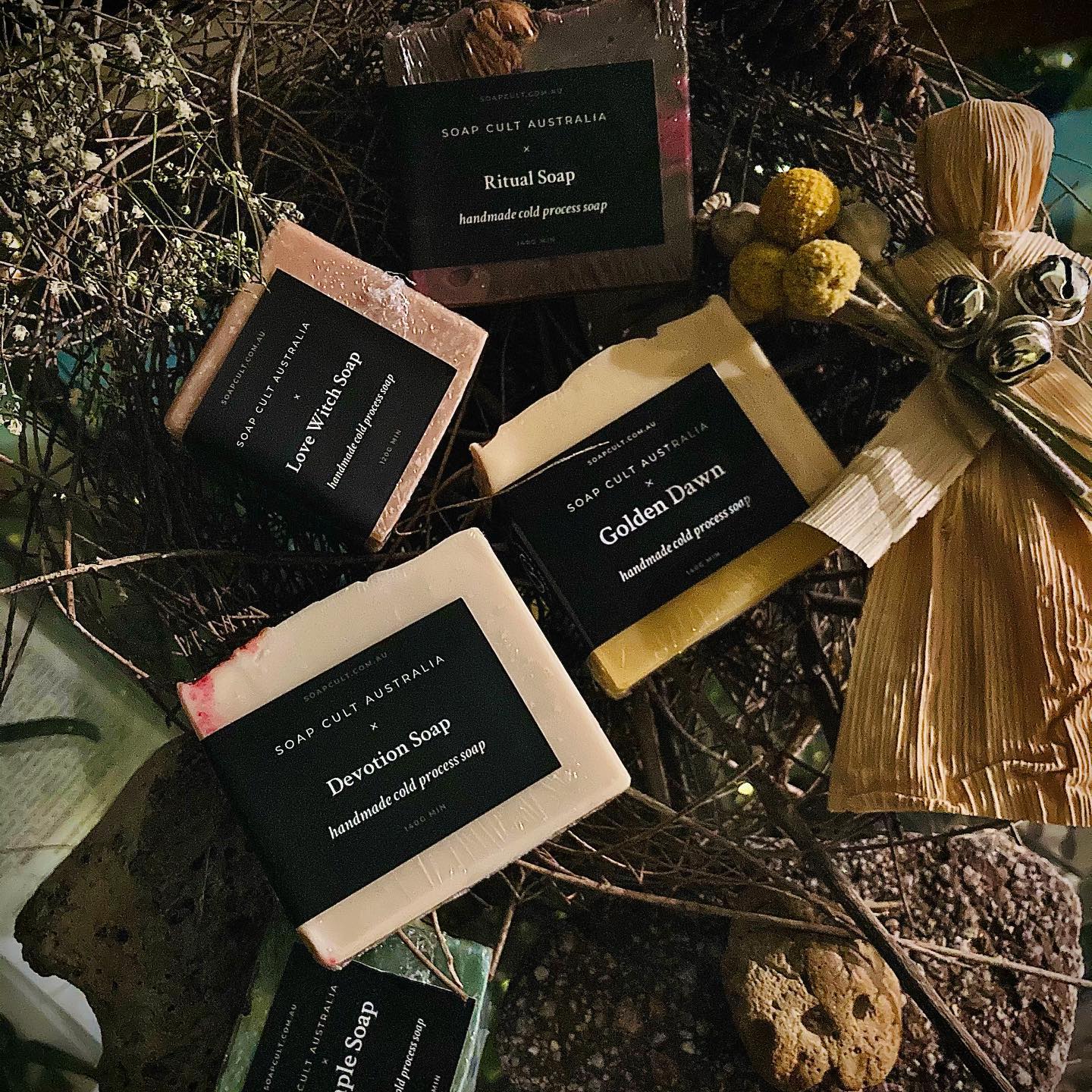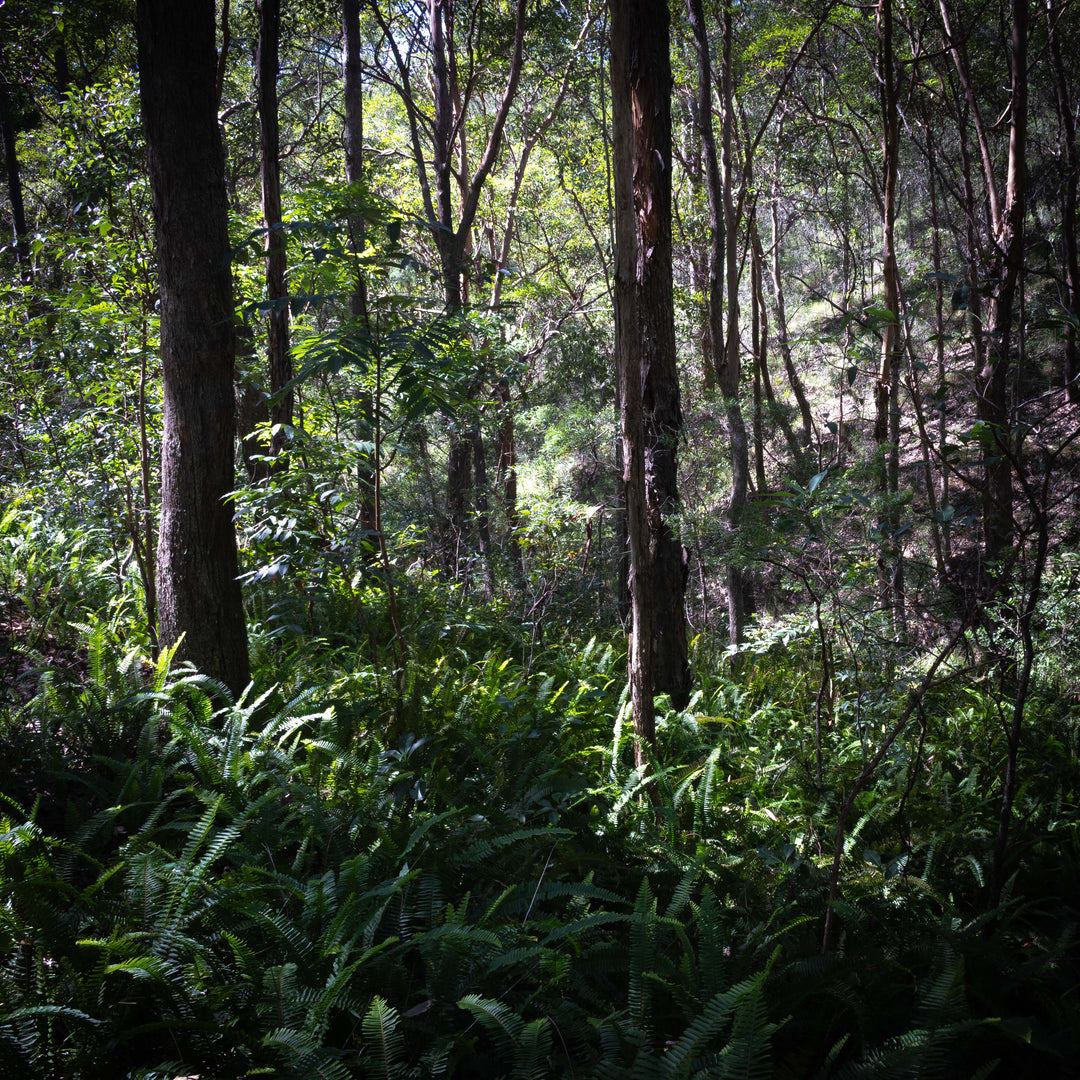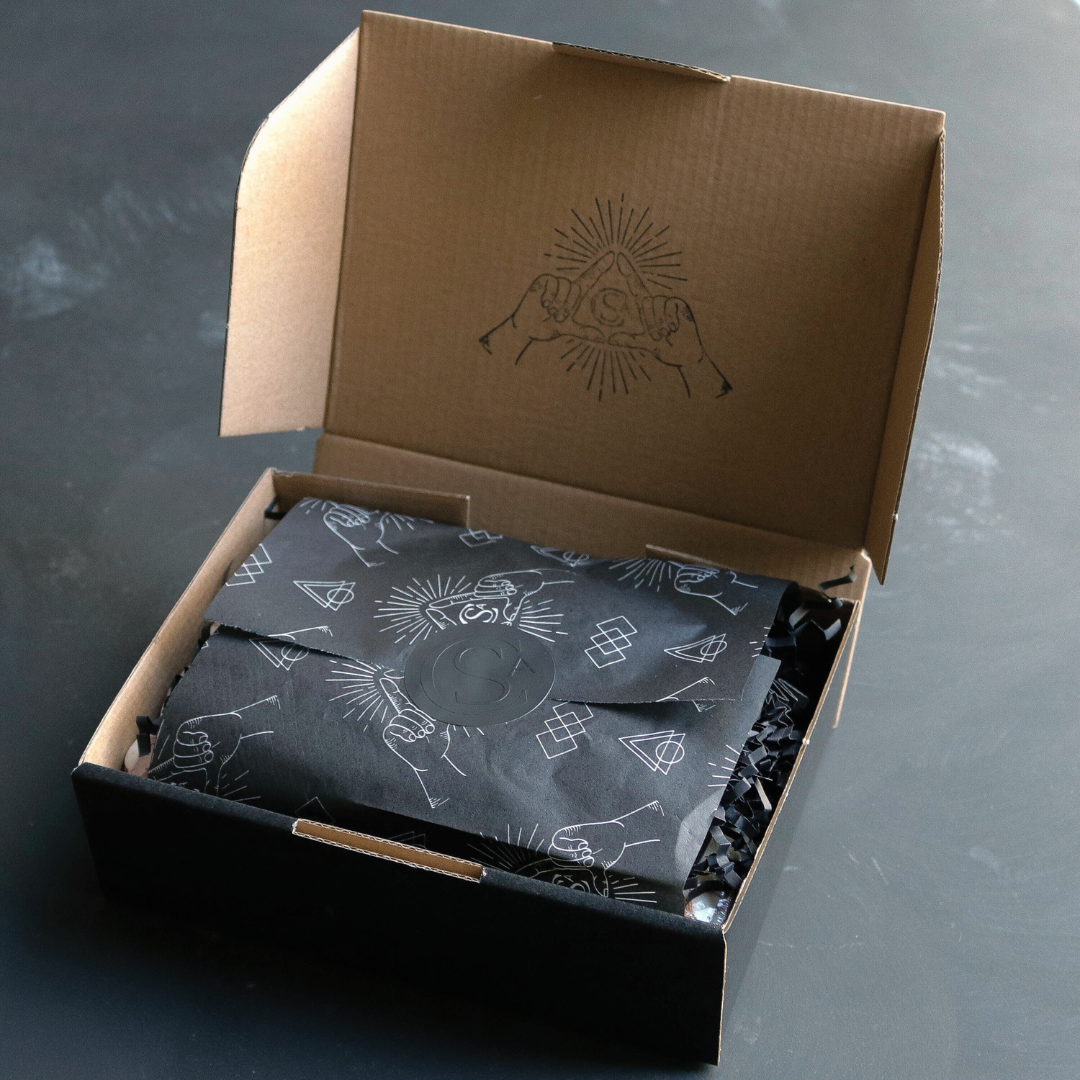Have you ever picked up a bar of handmade soap, only to find it’s suddenly gotten a bit sticky or sweaty? In this blog, we’ll explain what causes that yucky, tacky feeling on your bar of soap and what you can do about it.
WHY DOES MY SOAP GET TACKY OR SOFT?
One of the most well-known benefits of handmade soap is its moisturising properties. Handmade soap contains loads of skin nourishing plant oils and butters which help to cleanse the skin without making it feel tight or dry.
But it’s only when the weather is rainy or humid, that’s when we can visually see (and feel!) those ingredients in action, beyond simply washing with it.

This photo of a glycerin soap was taken in our powder room. It'd been raining for about a week and the surface of this soap was dewy. You can also see dried bubbles (this is the main hand washing basin in our home) but it's the little raised dots that I wanted to show you. That's where glycerin dew has formed and either been washed off or dried as the weather improved.

This is Ritual Body Soap on the curing rack. At the time of this photo, it'd been raining non-stop for about a week. Just the day before, the soap looked a bit glossy on top. Now it's appears more matte and the excess moisture is disappearing.
ALL ABOUT GLYCERIN
All Soap Cult Australia soaps are rich in glycerin – a humectant which draws moisture from the air onto your skin, keeping it feeling soft and supple for longer.
Glycerin is amazing in soap because it helps to attract and lock moisture to the skin. That's why it's also a highly sort-after skincare ingredient.
So, if we know glycerin attracts moisture and there’s lots of moisture in the air…then what we’re seeing is the soap literally drawing that moisture, from the atmosphere onto the surface of the bar.
Other ingredients can also attract moisture, like salt for example. Our salt bars Temple can get a bit sweaty betty during long periods of humid or rainy weather.
HOW TO FIX STICKY OR SWEATY SOAP
The easiest solution is to simply do nothing. Once the weather settles down, the problem will disappear. It’s a cosmetic issue at best and your soap won’t be damaged or compromised in any way.
Just ensure you’re using a well-draining soap dish (we sell them btw) because a soggy bottom soap won’t last as long as it should, regardless of the weather outside.
If the texture of a dewy soap bar is really bugging you, here’s a few handmade soap hacks you can try.
1. Use the soap less often. You can do this in two ways.
Either unwrap another bar and alternate between bars each time you wash (giving them a better chance to dry out)
or
2. Cut your soap in half. Use one piece to wash with and stash the other piece somewhere else until the weather improves.
*note, don’t try this with glycerin soaps, they might break. See below for examples of glycerin vs cold process soaps

These are glycerin soaps from the Witchy Wisdom Soap Set. Glycerin soaps are usually moulded to look like other objects and are typically bright, opaque pastel or transparent in colour. At Soap Cult, basically any soaps that aren't rectangular or circular are made with a glycerin soap base such as these ouija, planchette, crystal ball and crystal soaps.

Rectangular soaps like Full Moon shown here and circular soaps like our Natural Facial Soaps are made using the cold process method. The OG traditional, handcrafted soap method. Cold process soaps can be pretty much any colour (except transparent) and shape. At Soap Cult, we'll generally only have cold process soaps in these two basic shapes.
Humidity and rain make cold process soap look "slick" and it'll feel a bit sticky or tacky.
IF IN DOUBT, JUST OBEY THE SOAP RULES

- Store away from heat and light
- Keep wrapped until use
- Allow to drain between uses
- For best scent use within 12 months
KEEP YOUR SOAP WRAPPED UNTIL USE
Soap Cult Australia exclusively uses biodegradable, plastic free wraps on our soaps. They’re earth friendly and break down into harmless material within a couple of years. They’re safe for composting or simply chucking in your regular bin. Unlike some biodegradable wraps, our don’t need special processing to biodegrade.
These wraps are also scent permeable, meaning you can smell the fragrance through the wrap; so you’re not missing out on anything by leaving them wrapped.
Leaving your soaps wrapped until use:
- Keeps them safe from moisture and dust
- Retains the scent
- Retains important information about the soap (name, description and ingredients)
I can’t tell you how many times over the years a customer has wanted to buy another bar of soap but they don’t’ know what it’s called and can’t describe the scent.
*super secret soap hack* Store your yet-to-use, wrapped soap collection in a cardboard box with a couple of those silica packets that come with most store-bought products (like shoes, appliances, vitamins, wicker baskets etc.). The silica will absorb excess atmospheric moisture and keep your soaps in a tip top condition.
IN CONCLUSION
Handmade soap is rich in glycerin, a naturally occurring ingredient that attracts moisture to the skin. It will also attract moisture to the bar itself during long periods of humidity or rain.
It’s harmless and will disappear once the weather goes back to normal. But, if it’s bothering you, try our suggestions above for reducing sticky, tacky, dewy, sweaty soap.
And, remember to always follow the Soap Rules.
